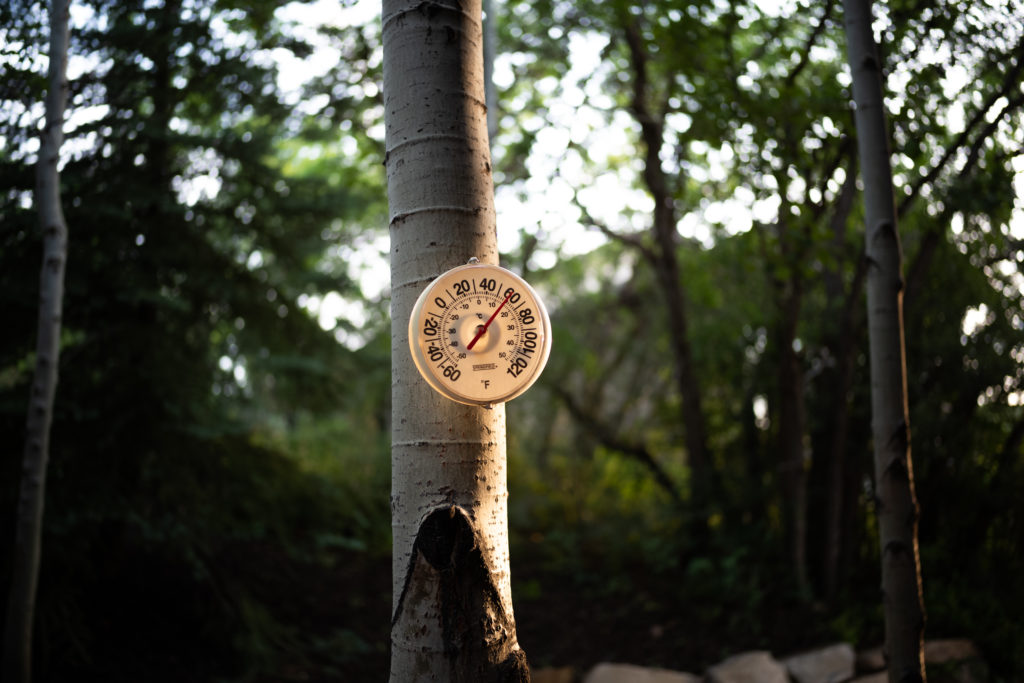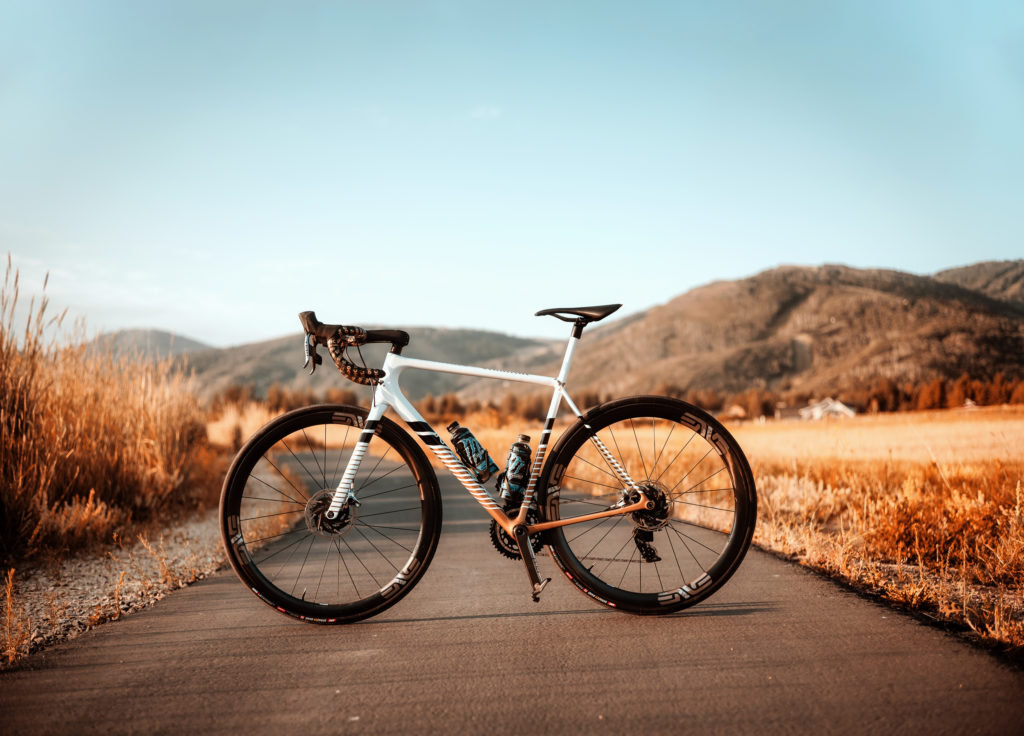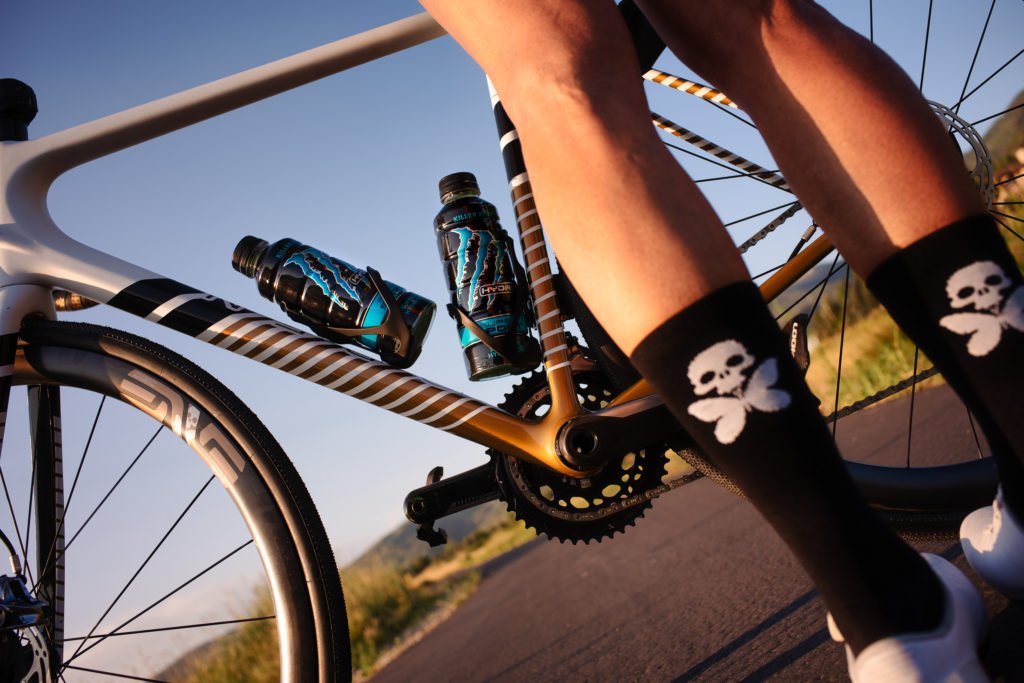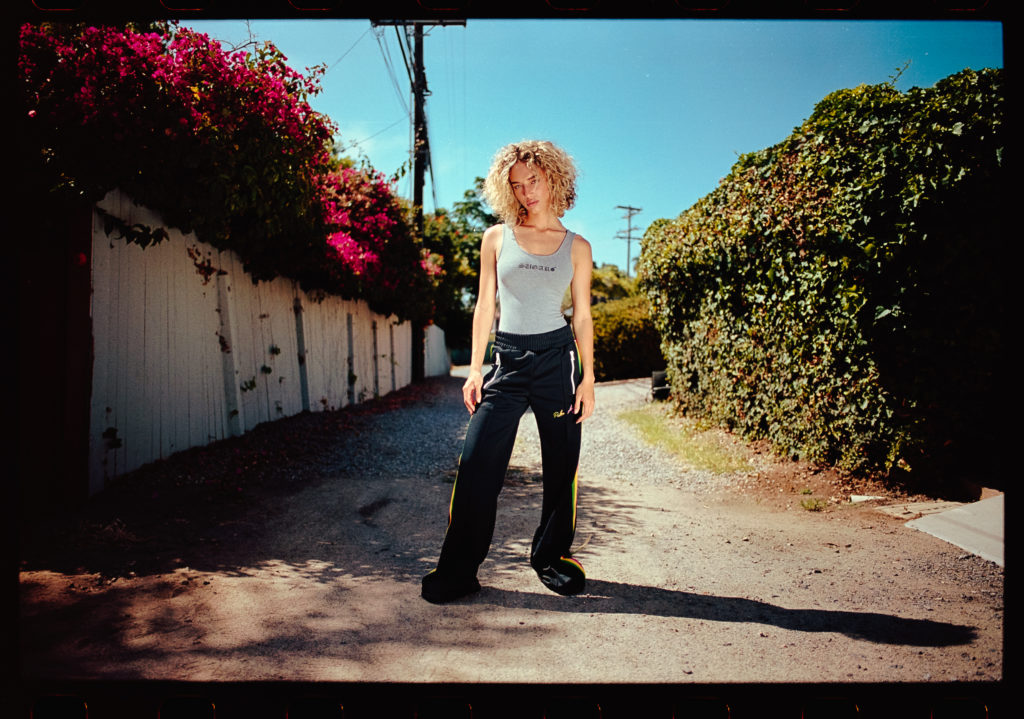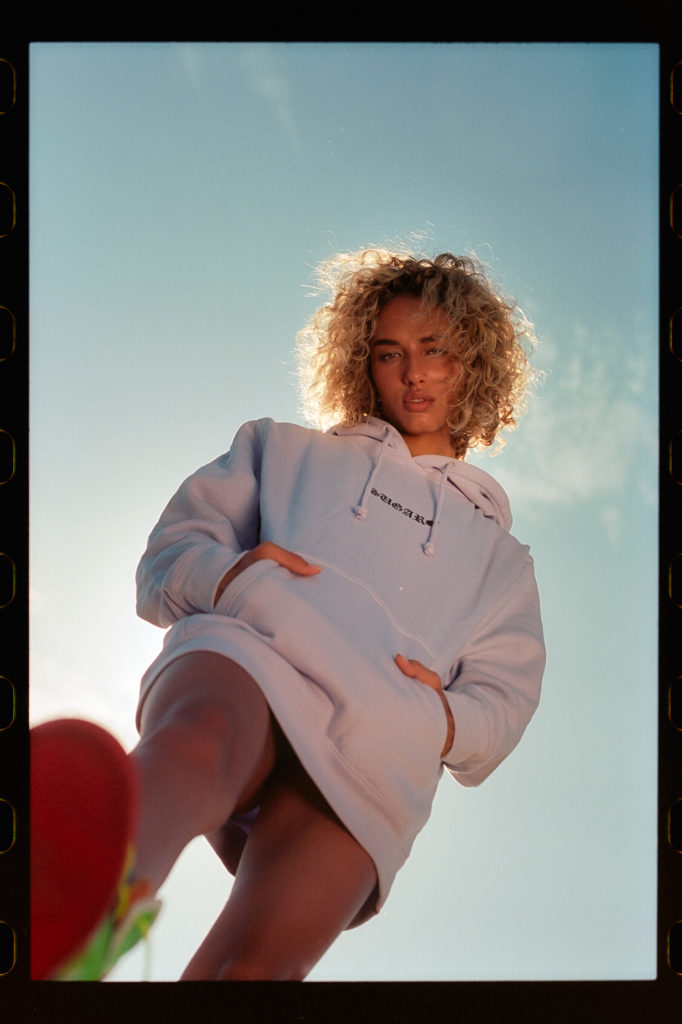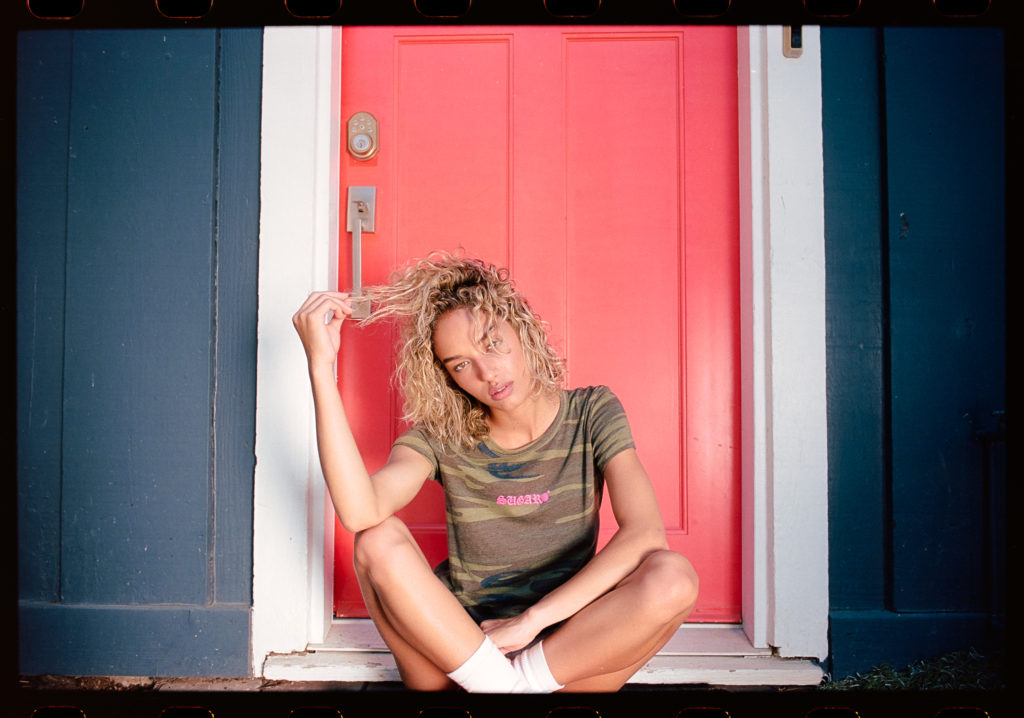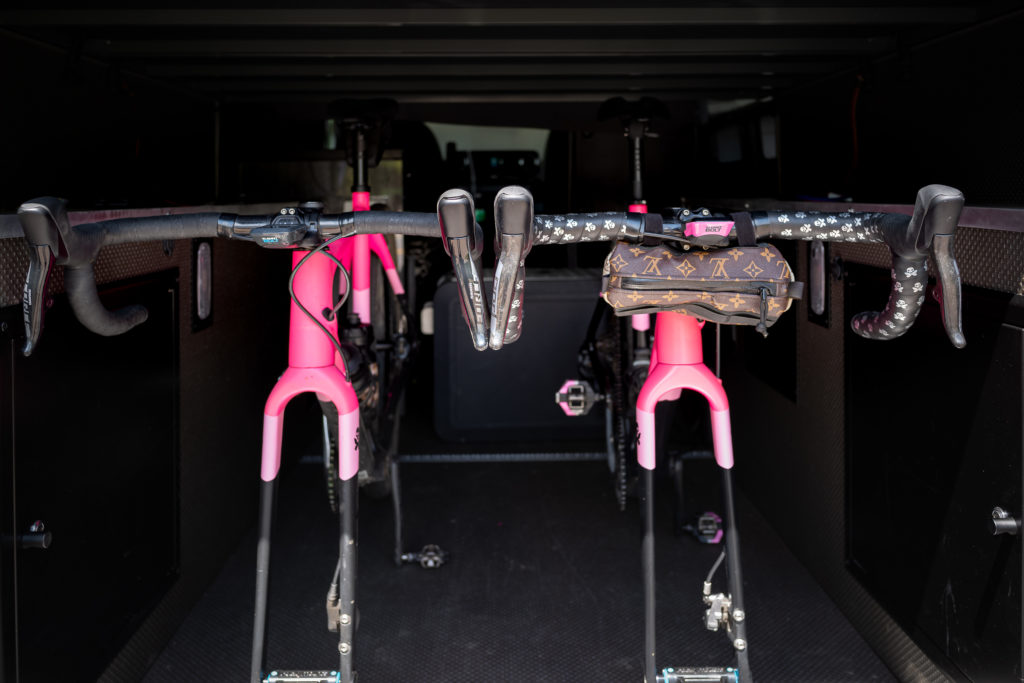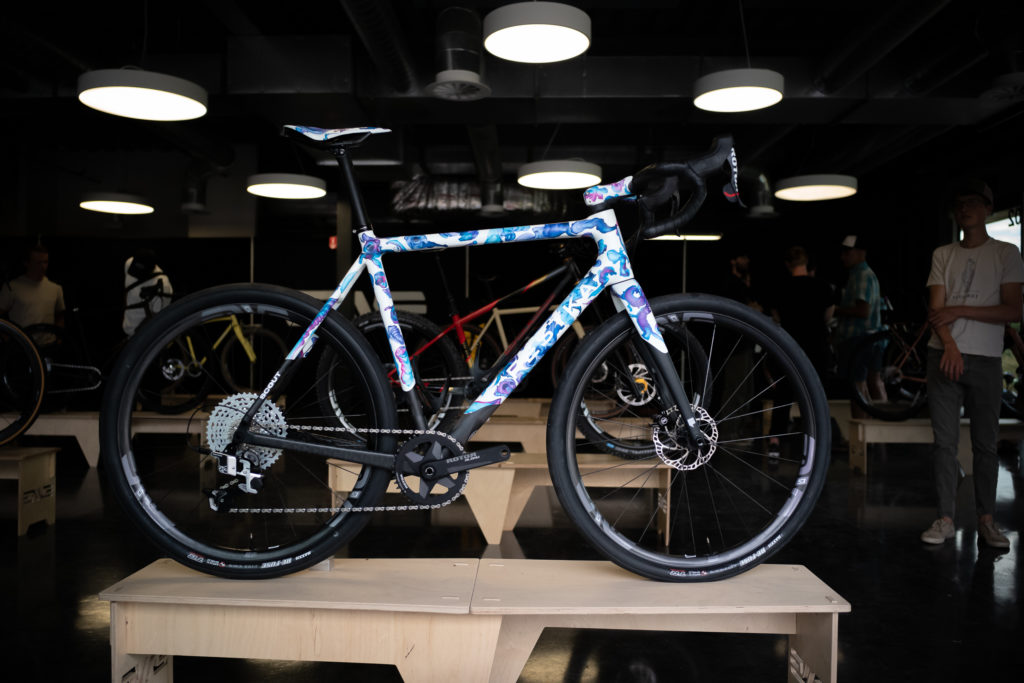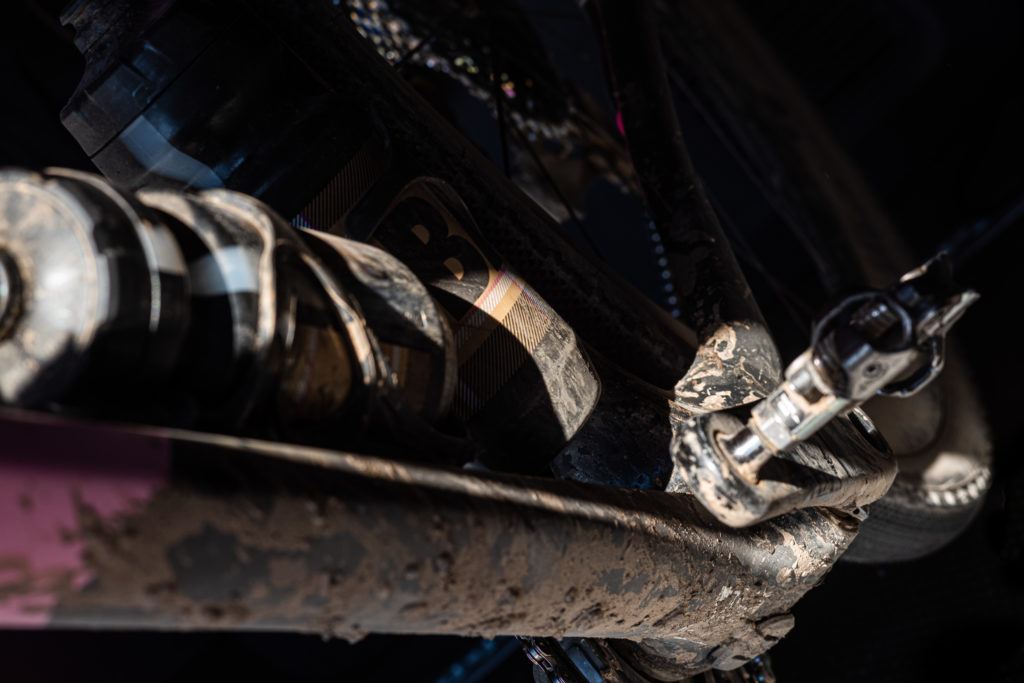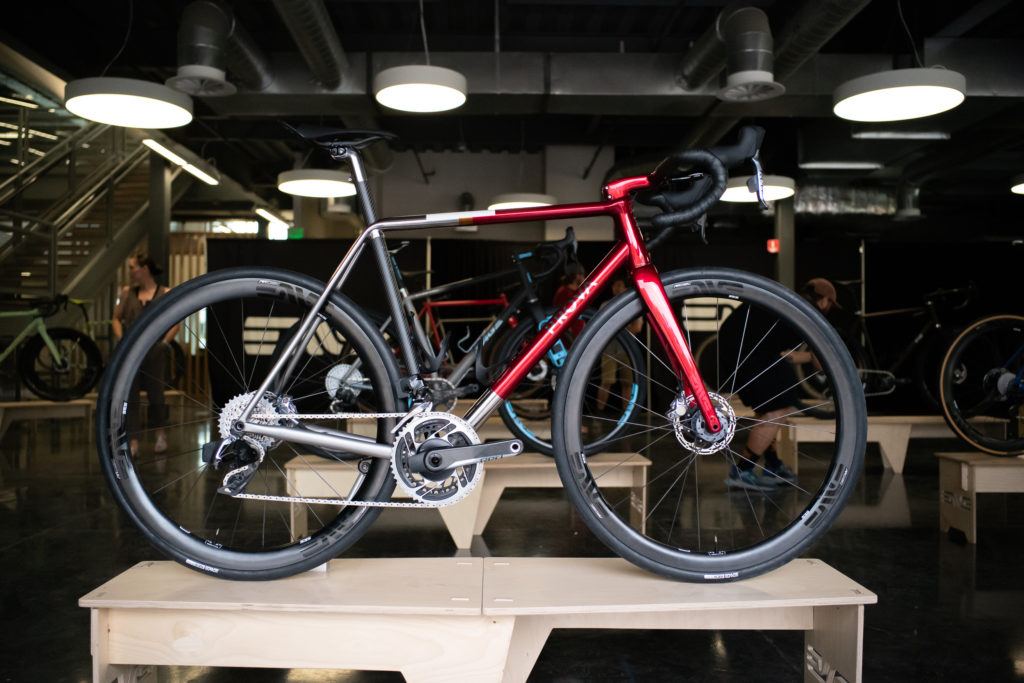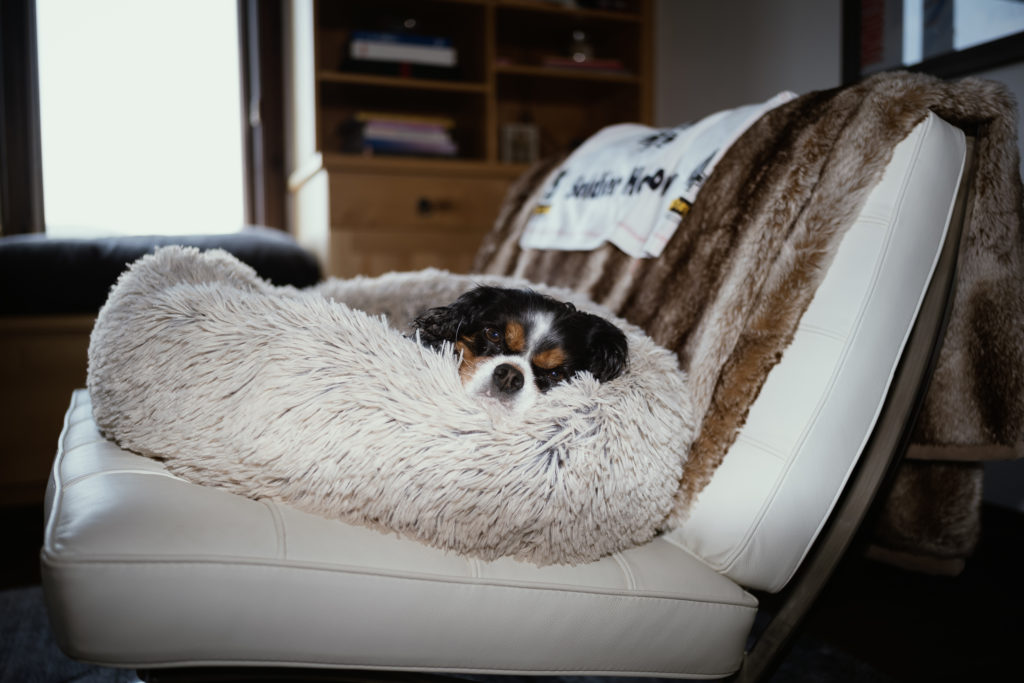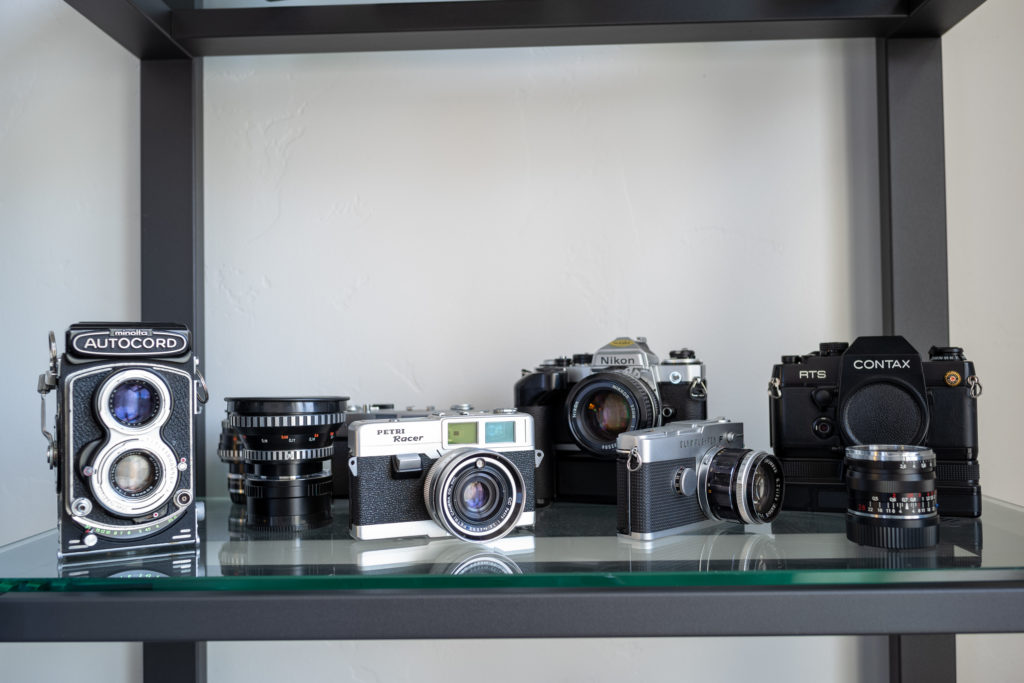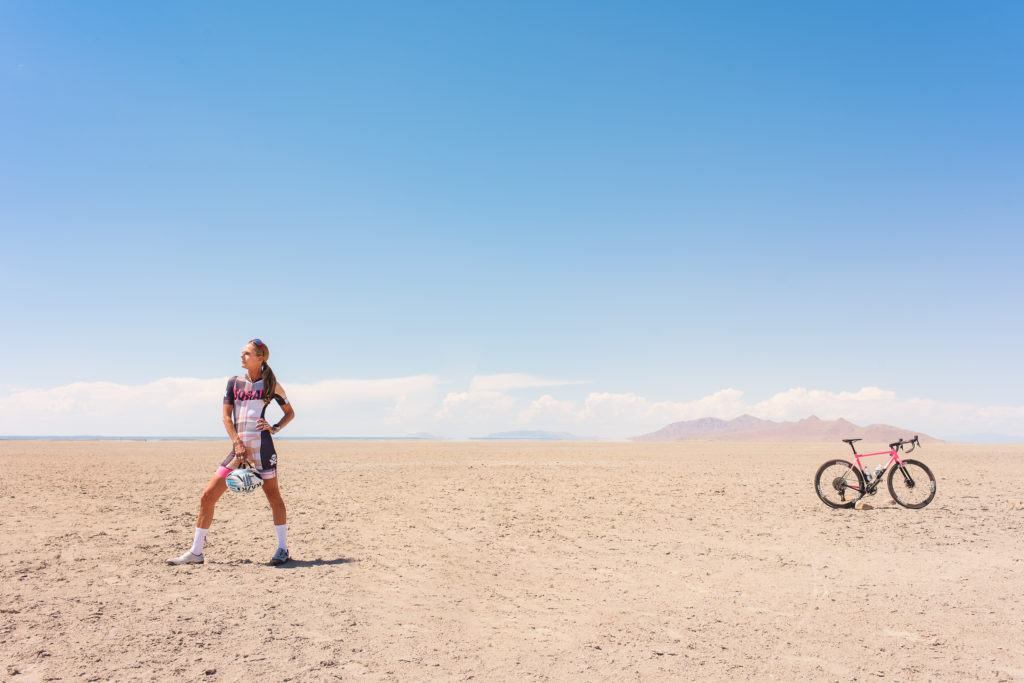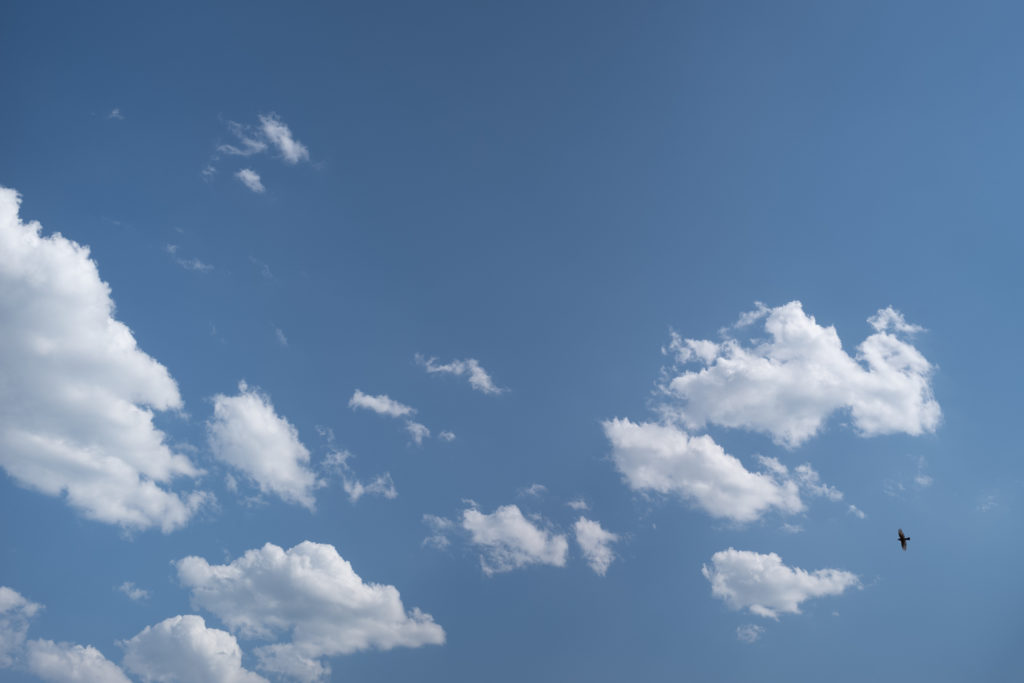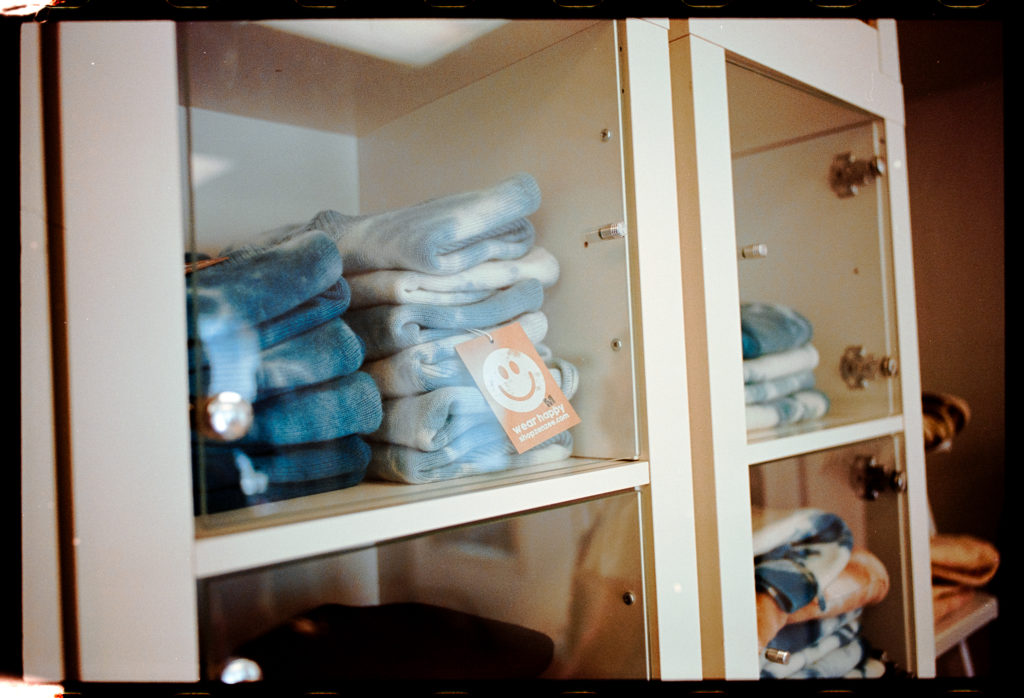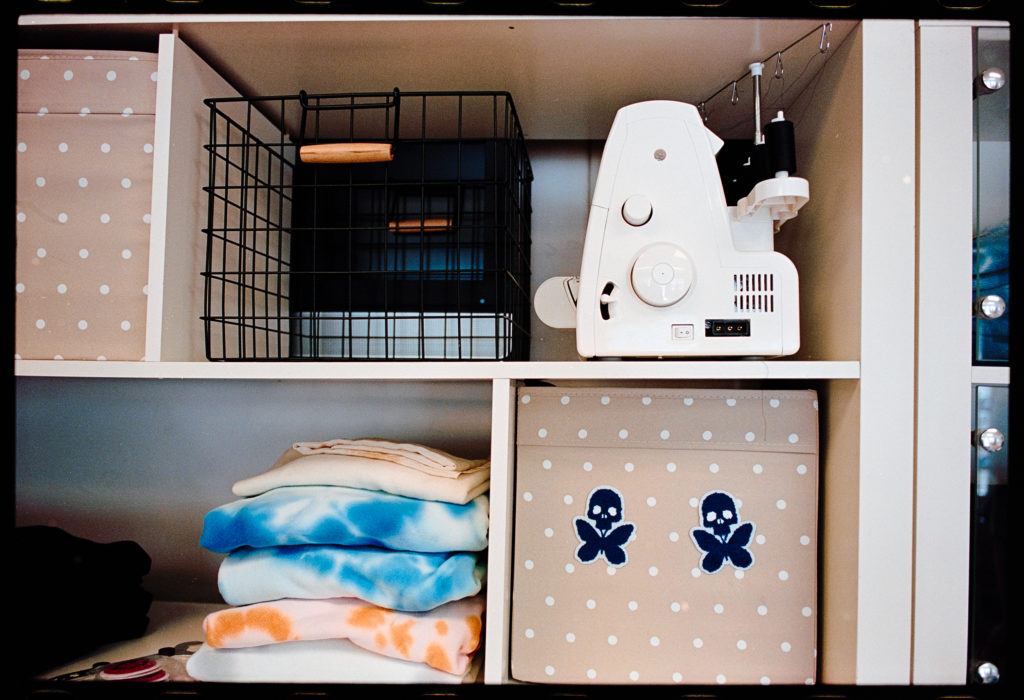The Voigtlander 28m f/2 Ultron II Aspherical lens is an update to the original non-ASPH 28mm Ultron lens. You can easily tell the difference between the original and the updated versions (v2) because the v2 has a focusing tab and the original had an all too gimmicky focusing post that I was going to say looked like a goat penis. My friend and excellent photographer Todd (who apparently knows a thing or two about goat penises) told me that comparing the original focusing post to a goat member is offensive so I am not saying it looks like a goat member.
The reference to a goat penis, although (for the record) I didn’t actually make the reference, even though it might be accurate is crass and unnecessary but it does bring us to a discussion of Voigtlander marketing terms. If you are considering Voigtlander lenses in 2021 you will need to know the difference between the words “Classic” and “Vintage” when they are used to describe Voigtlander lenses.
The word “Classic” refers to the lens diagram, rendering, and image produced by the lens. Lenses in the Classic line, including the Voigtlander Nokton Classic 35mm f/1.4, are designed to give you an image quality similar to lenses from the 1950’s and 1960’s. Classic lenses are “character lenses” and you should expect that.
Vintage lenses on the other hand, are purely modern lenses with all of the modern technology like aspherical and dispersion elements. The “Vintage” classification refers to the styling of the outside of the lens. The word vintage, when used by Voigtlander, tells you absolutely nothing about performance. The goat penis style focusing post on the V1 of the lens was a vintage accouterment (1).
When these lenses were released in 2021 there were two colorways. Namely, a 1950’s black paint colorway and a chrome colorway. The black paint is even vintage in styling. If you like the vintage thing, you are going to be in heaven (2).
On Garden Gnomes and Parked Cars
The lens is as useable as any other solidly designed rangefinder lens. With the goat penis issue resolved with a fully functioning focusing tab for the v2, using the lens is as good as any other. The focusing action is a little stiff when compared to other lenses but it doesn’t get in the way. It isn’t like you are going to pull the skin off of your index finger because it is so stiff.
The lens is on the tiny side but not fiddly tiny. Unless you have chubby meatsticks for fingers, I don’t foresee any usability issues.
Importantly, and we will get to this in The 28mm Recommended List, this lens uses 39mm filters. I am getting old in my old age and I am starting to feel that rangefinder lenses without 39mm or 46mm filters should be banned or at least jeered and criticized. Many legacy rangefinder lenses have 39 or 46mm filter threads so having a set (or even a mixed set) of 39 or 46mm filter ring lenses would be beneficial Where is the 39/46 filter thread alliance?
As this site develops and I am shooting more and more film with cameras that max out at an annoying 1/1000 top shutter speed (you know which cameras I am talking about right?) I am finding that I am succumbing to the tyranny of having to use ND filters. Looking at the lenses I normally used, lenses without 39mm and 46mm threads are a bit of a pain point. This is a nonissue if you will never use lens filters but never say never.
This lens close focuses to 0.5m. You guys already know that I find that to be an annoyance with rangefinders but my Spidey Sense says that something is afoot in the rangefinder world. Leica just put out a close focusing 0.3m lens (Summicron 35mm APO, Leica is pushing and pushing and pushing people to use m-lenses on a Leica SL body, and there are rumors of a Leica M11 with an EVF. If you will never use this lens with any sort of electronic finder, you should heed my advice regarding close-focusing rangefinder lenses. If, however, you think that the industry might be pushing you into abandoning your love for a rangefinder and/or at some point in the future or you might sell this lens to someone who might adapt it to something electronic, please ignore my previous opinion regarding close focusing rangefinder lenses. Given that I now using my rangefinder lenses on my Panasonic S1 the close focusing of this lens is a feature and not a bug.
Does it have SOUL?
As I discuss in the 28mm Recommended List, this whole SOUL thing doesn’t really fit for 28mm rangefinder lenses because legacy wide-angle range finder lenses suffer from all sorts of vignetting problems, age related disease, and color shifts when used on digital cameras. Since I go between digital and film, I am forced to leave the quest for SOUL to other focal lengths.
If you are looking for a low contrast, character lens, so you can shoot some Cinestill BWXX, the Ultron is not for you. For everyone else who might shoot digital, is interested in a modern style 28mm lens (even though it looks like it was born in 1950 (2)) we do need to talk about discordant lens pseudoknowlege you find in photography forums.
You are reminded that I am a radiologist and a photographer. I am certainly not a lens designer. Everything I know that I trust about lens design I heard in a podcast with Jason Lane. Everything else I think I know is probably nonsense. I would also venture to guess that much of what you read online about lens design comes from camera forums is also probably nonsense. As an example, I offer you the case of ASPH, lens aberrations, and pig vomit bokeh.
I can responsibly tell you that ASPH elements in camera lenses can make lenses smaller. I learned that from Jason Lane. Everything else is contradictory and nonsensical. For example, some forum dwellers advise that ASPH lenses have better bokeh and others say they have worse bokeh. These opposing viewpoints suggest that there are confounding variables that forum dwellers do not understand or care to consider.
I am told that ASPH lenses fix “spherical aberration, coma, and astigmatism.” I am also told that lens with swirly bokeh swirl because of uncorrected spherical aberrations. It would therefore sound logical to conclude that a modern lens with the word ASPH painted on the front of the barrel wouldn’t be expected to swirl and make pig vomit bokeh right? Well, there must be confounding variables at play because that I just happen to have a picture of a thermometer in my backyard with some swirly-ish bokeh taken with the Voigtlander Ultron Vintage 28mm f/2 ASPH VM Type II
The purpose of this discussion is to remind you that you should be careful trying to predict how a lens performs based on the pontifications of forum dwellers dwelling in camera forums. My thesis is that there are always confounding variables and image quality is not a single variable discussion. This entire discussion of pig vomit bokeh is decidedly not intended to get you worked up about the bokeh of this lens. If you feel like you are getting worked up, please stop.
For better or worse, I am bound by my previous missives. I refer to swirly bokeh as pig vomit bokeh so I am including that here for continuity. Even if you are in search of bokeh that swirls like a brew brewing in a witches cauldron, this lone image of a thermometer is literally is the only image I took over the course of weeks that did this. I also tried to repeat it and it didn’t work. The light and angle and background and f-stop all need to come together to make this happen. This seems to be a relatively rare occurrence that only happens in certain conditions. Even if you are, for some insane reason, looking for a lens that swirls, this isn’t the one to get. In the vast majority of cases, the out-of-focus area is perfectly great and not something to be concerned about. I almost wish I didn’t happen to take that picture because I fear that this discussion of swirly bokeh will overshadow all of the other hundreds of images I took that didn’t swirl and weren’t distracting. Because I took it, I felt I had to mention it.
We are now done talking about pig vomit bokeh but we are not done discussing nonsense you hear people complain about in the camera forums. Consider the following image which was shot on a bright sunny day at f/2.
There is no vignette on this image because I clicked a button in Lightroom to make it disappear. Such alchemy. The vignetting on the original, however, was not insignificant as you can see below.
If you look back at my review of the Ricoh GR 28mm f/2.8 LTM lens, I was bitching and moaning about vignetting. The vignetting from that lens was weird, harsh, and not easily corrected.
The vignetting on the new Voigtlander lens is different. This is easily corrected in post. So much so, I wrote an article over on Casual Photophile where I asked, “If a lens vignettes and nobody sees it, does it vignette?” So deep. So so deep. I encourage you to read the entire article as it is intended to be a companion piece to this review.
Another question I could have asked in that article was, “if the only thing a lens reviewer can complain about is vignetting when shooting wide open, in full sun, on a flat background, should that reviewer just shut the heck up, get a life, and stop annoying people with nitpicking reviews?”
I don’t know the answer to the first question but you should read the article because it is important to understand where my head is at. Regarding number 2, I think the answer is most certainly “yes.” Therefore, I will shut up about vignetting other than to say that although I wish it wasn’t there, if I were offered the bargain of either 1) a lens with easily corrected vignetting as a trade-off for a lens that is tiny, relatively inexpensive, and I can shoot at f/2 or 2) a lens with no vignetting that is larger, slower, and/or more expensive would I take it? Read that Casual Photophile article for the answer.
You guys already know that I am not a bokeh slaying fanatic. My feeling is that normal people (e.g. anyone that doesn’t frequent camera forums) don’t care all that much about bokeh. They do, however, care if an image is out of focus. Therefore, I generally opt for slower and smaller lenses but at the 28mm focal length, I have a different opinion.
Although I seem to be the only one who ever wants to admit it, a lot of what I do is to try to make my images look like they were not taken with an iPhone. I would be willing to bet that the correlation between the recent film renaissance and the rise of mobile phone photography is not random. My theory is that there are others like me and film is a great way for your images to look like they were shot on something other than an iPhone. That, however, is a story for another time.
Making images that don’t look like they were taken on an iPhone at the 28mm focal length can be problematic because so much of a scene is always in focus. The f/2 of the Voigtlander 28m f/2 Ultron II Aspherical gives the images an unexpected pizazz I wasn’t expecting. I won’t call it SOUL per se but having f/2…even at the expense of a little vignetting… is welcome. For whatever reason, at 28mm the difference between f/2 and f/2.8 seems to be a bigger and more interesting difference than I would have expected. If you are bokeh hunting at 28mm, this could be important for you. It might also be of interest to note that I am also able to focus with a rangefinder at f/2 and 28mm which is more than I can say I can do with f/2 at 50 or 90mm. #sayingthequietthingsoutloud.
Anyway, the f/2 on this lens helps mitigate the “please don’t ask me if that is an iPhone image” fear with essentially no size penalty compared to its closest competitor Captain McWobble.
Flare there
Essentially none. I like a hood for protection but if you don’t want to spend the extra money on the Lh-4n or Lh12 hood I won’t be criticizing you. The lens is also really tiny without the hood.
So did I keep it?
I got married late in life. I was once told that if I put as much work into finding a wife as I did riding a bike I would have gotten married 20 years earlier.
I was also told that I didn’t do dating correctly. My approach was to figure out what was wrong first and then decide if I liked the person. Apparently, most people do the opposite. I am told everyone else goes all in then figures out the problems later. I was also told on more than one occasion I am an [expletive] for doing it my way.
For better or worse I am apparently doing the same with camera lenses. I hope that doesn’t make me an [expletive]
After dating the Voigtlander 28m f/2 Ultron II Aspherical, with the exception of vignetting at open apertures in scenes with a homogenous background, my approach of finding the issues first was an unfulfilling exercise.
Given that I have been critical of Voigtlander products in the past, you could say that this is a Voigtlander Mea Culpa. To see just how far my Mea Culpa goes, to see how this lens compares to its closest competitors, to learn once and for all if you should pony up and get the Leica Elmarit 28mm f/2.8 once and for all (that really is the question you are asking yourself, isn’t it?) if I kept it, and to see which 28mm lenses I recommended to my friends and family, please visit The Recommended List. I would really appreciate it if you did.
NOTES:
- Voigtlander, if you are listening, the words classic and vintage are too close to each other and are confusing. My suggestion is to come up with another way to classify these lenses. I love the idea of the classic line but I have seen too many people buy the classic lenses and not understand what they are getting. They then go online and complain about your lenses which isn’t helping your cause. The distinction is not clear in the marketing materials. Another option would be to get rid of the vintage styling altogether…..
- Voigtlander, if you are still listening, are you sure that this whole “vintage” styling is the way to build a brand? For me, I think the vintage styling is a bit gimmicky. Wouldn’t it be better to create a “Voigtlander look and feel” that is uniquely Voigtlander and just use that across your entire line? I mean, is anyone saying to themselves “Oh man, I only buy Voigtlander lenses because they look like they are from the 1950’s? I am a Voigtlander fanatic because they copied what lenses like from years ago and now I can have something that looks old?” Maybe you know something I don’t but everyone knows a Leica lens when they see it. A Zeiss lens looks like a Zeiss lens. In my opinion, you don’t need to hide behind vintage styling gimmicks and focusing posts. Your lenses are good. Full Stop. They deserve their own look and feel. The vintage look is OK enough and I won’t hold it against you but would Nike, Apple, Leica, Gucci, Supreme, Betty Designs, Rapha, or any other great brand story try to define themselves by copying what other brands did in years past. I think you are better than that. Let the Artisans copy what other people have done. Make Voigtlander well…Voigtlander.
Sample Images (black border = film)
(note: the above image taken with on camera flash. That is not a vignette.


